Day 5: Phnom Penh
Our first full day in Phnom Penh began with breakfast poolside at the hotel’s cafe. Highlights included fresh passion fruit juice and homemade pineapple-ginger jam, along with piles of amazing fresh fruit. After breakfast we met the driver we hired for the morning and set out for the Tuol Sleng Museum and the killing fields of Choeung Ek.
In early 1975, the Khmer Rouge took over Phnom Penh and forced the entire population into the countryside. During the time of the Democratic Kampuchea (Pol Pot was the prime minister), huge numbers of Phnom Penhois were imprisoned or killed. Tuol Svay Prey High School was taken over by Pol Pot’s security forces and turned into a prison known as Security Prison 21, or S-21. This soon became the largest center of detention and torture in the country, and the Tuol Sleng Museum now serves as a testament to the crimes of the Khmer Rouge and the atrocities that occurred at S-21.
Each prisoner in S-21 was photographed (sometimes before and after torture), and the museum has room after room of harrowing photos of men, women, and children. Visitors can enter the cells – some big enough for only one person, while others held many – and some cells still contain the rusted iron beds and various instruments of torture. Gravesites of several prisoners remain in the museum’s courtyard. This was a very depressing place but was also important in helping understand this major part of Cambodia’s history.
From Tuol Sleng we drove southwest to Choeung Ek, better known as the Killing Fields. Between 1975-1978, about 17,000 men, women, children, and infants who had been detained at S-21 were taken here to be killed. The remains of ~9000 people were exhumed from mass graves in 1980; 43 of the 129 communal graves have been left untouched. A large structure known as the Memorial Stupa displays more than 9000 skulls and bone fragments behind clear glass panels.
An audio tour accompanied our walk around the grounds, offering explanations of various areas and describing buildings and structures used for extermination that no longer exist today. The area is beautiful, full of trees, plants, flowers, and a large lake, though the many large depressions in the ground serve as reminders of the large graves disinterred not so long ago. We learned that from time to time, especially after heavy rains, fragments of bone and bits of cloth still surface and are carefully collected and preserved by the groundskeepers.
This was a tough place to visit. What happened here is impossible to imagine or understand, and the peacefulness of the grounds now makes it even harder to do so. Two spots were particularly difficult – the large tree primarily used for killing women, children, and infants, now strung with hundreds of colorful bracelets in their memory, and the nearby Magic Tree, whose branches held speakers that played loud Khmer music to drown out the sounds of the screaming people. Standing under this tree listening to a combination of this music and the sounds of a diesel generator (described by the audio narrator as “likely the last sounds these people ever heard”) was a chilling experience. Grim as it was, I’m very glad we visited Choeung Ek; it’s a place I will not be forgetting any time soon.
Back at the hotel, we avoided the afternoon thunderstorm and booked massages in the lovely hotel spa. Properly relaxed, we headed back out into the streets of the city in search of a restaurant called Friends. Owned by an NGO, Friends is part of a local organization working with Cambodian street children and their families to help them become independent and productive members of the community. The entire staff, including servers and cooks, are street children training for the hospitality industry, and both the food and the service was fantastic.
After dinner we walked over to Sisowath Quay, the street running along the Tonle Sap river. Lots of people were out, fishing, dancing, playing soccer; we had a great time strolling along observing the locals.
On weekend evenings Phnom Penh has a large night market, so we walked over to check it out. There was stall after stall of clothes (many recognizable US brands, unsurprisingly), along with a few trinket stalls and lots of food stands. We bought delicious fish-shaped chocolate pancakes but no clothes.
We walked back along the river to the hotel, had a swim in the beautiful pool, and called it a night. Initial Phnom Penh observations: very poor, very dirty, maybe the worst traffic of anywhere we’ve visited, easy to navigate, unique French-inspired architecture, and some of the friendliest people we’ve met. I’m already wishing we were here for a longer time. 🙂

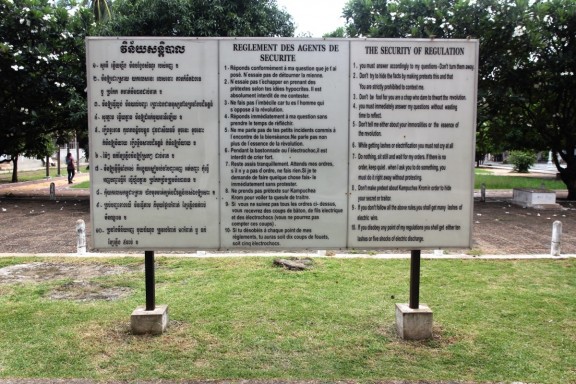
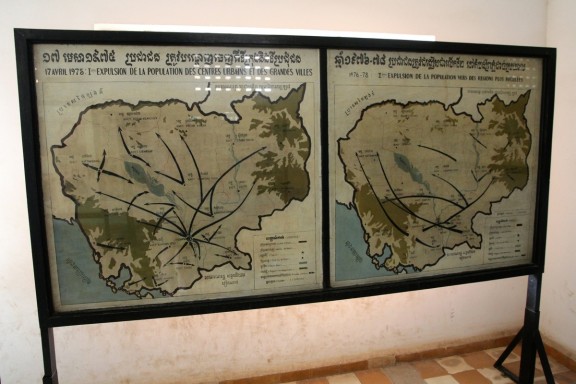
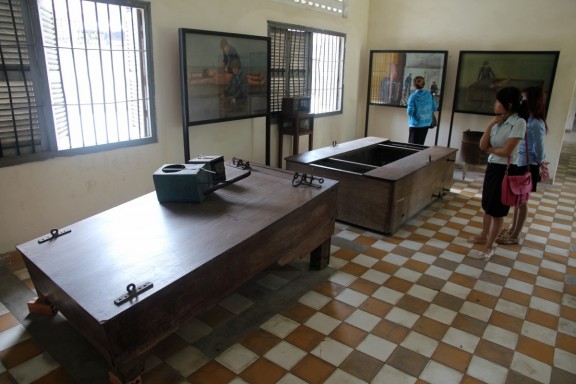

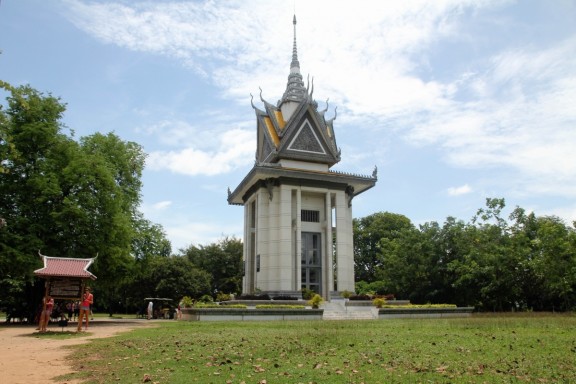
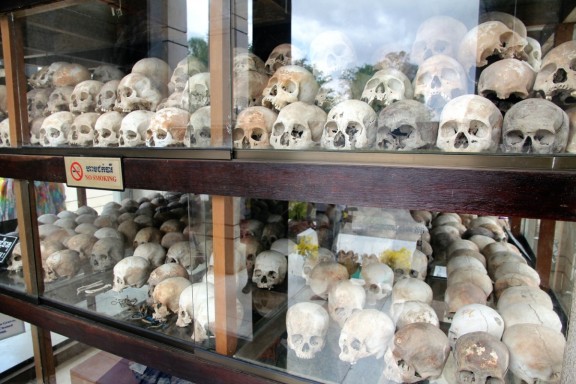


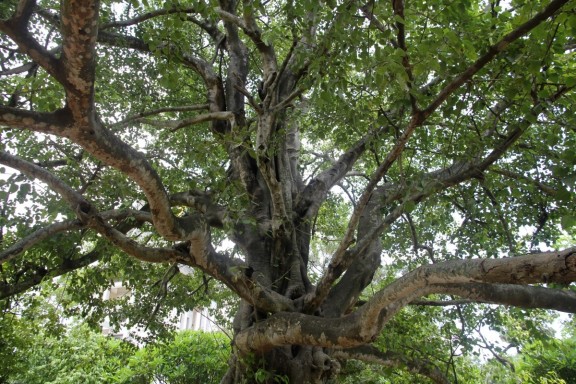
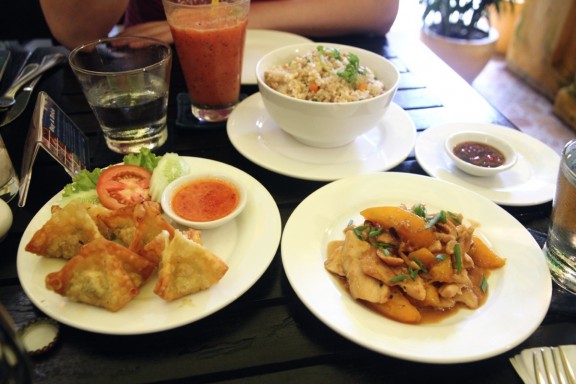

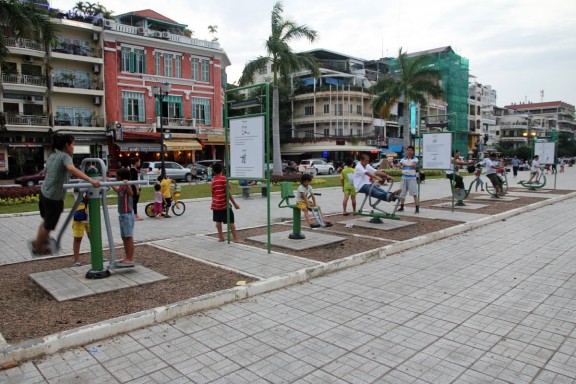
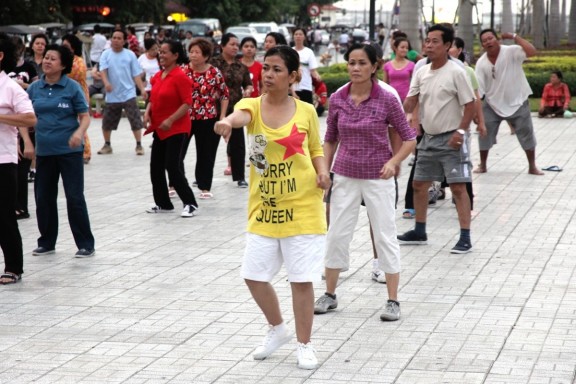
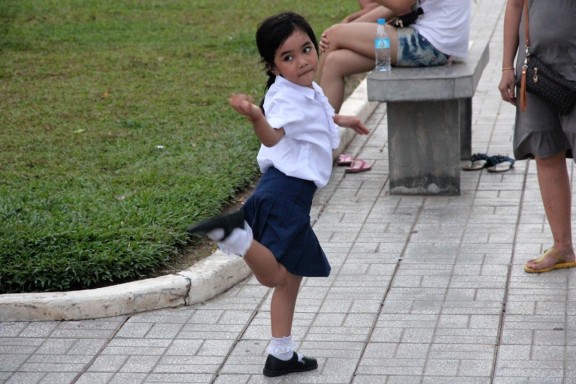

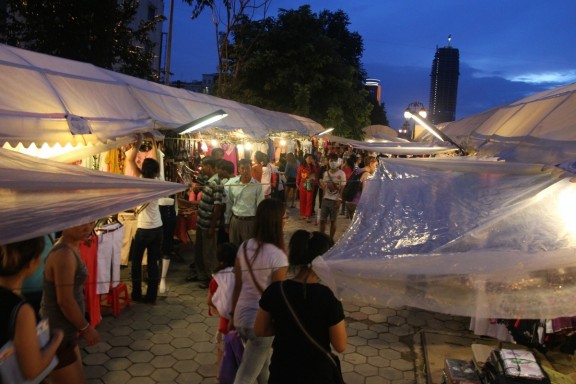
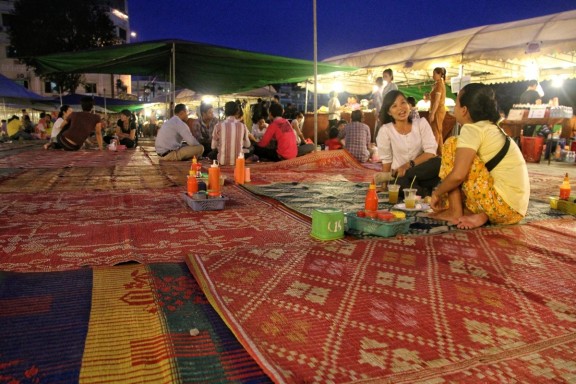
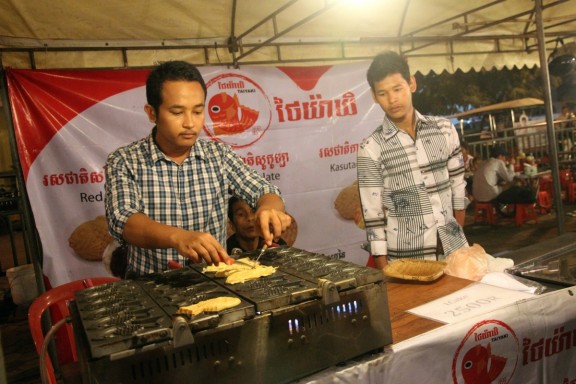
Hi Nicole & Matt,
I am enjoying your blog so much. What a fantastic trip and history lesson. Hard to imagine so much sadness, not that many years ago, and what it is today. Love the pictures of the temples. So majestic, they take your breath away. Looking forward to tomorrow. This is so much fun for everyone. Thanks for letting us tag along.
Bets
Wow! What a day! You guys sure pack in an lot! The photos are great and the food looks scrumptous too. (maybe that’s because we are camping so most food looks much better than camp food!) Here’s to continued safe and fun adventures!
Confucius say, “Man who eat with one chopstick going to starve.”
Confucius say, “Man who scratch ass should not chew fingernails.” Dad
Looks like you two are not going hungry! What a fantastic restaurant to choose! Great food and what a wonderful thing to do for those children!
Keep the history lessons coming; I’ve heard and read about the Killing Fields but to see actual pictures makes it so real. Also looks like you had a reprieve in the rainy weather. Enjoy! Love, Mom 🙂